How to read your contact lens prescription and parameters

Want to get contact lenses? You should first know the parameters found in the prescription your eye doctor or optometrist gave you after your eye test.
Please keep in mind that the data provided by your eye care practitioner should not be over a year old, as the parameters of the eyes can change with age. It's also important to know that contact lens prescriptions and glasses prescriptions are not the same.
- Contact lens parameters you need to know
- How to determine a contact lens prescription?
- The difference between a contact lens and spectacle prescription
- Additional information on a contact lens package
- Not every contact lens brand suits each patient's needs
- Summary
Contact lens parameters you need to know
Curvature (BC)
The base curve of a contact lens describes the curvature of the lens in millimetres. It ensures that the lens sits well on the eye. Usually, this parameter is from 8.2 to 9.0. The most common BC is 8.6.
Dioptres / Sphere (D/dpt./S/SPH/PWR)
Sphere refers to the refractive power of the contact lens. The unit of measurement for spherical power is a diopter or D. Generally, the spherical power of a lens is indicated with a plus sign (+) for hyperopia and a minus sign (-) for myopia.
Diameter (DIA)
Diameter describes the diameter (or size) of the lens. Soft contact lenses have a larger diameter (13.00 to 15.00 mm) than hard contact lenses (9.00 to 10.00 mm).
Cylinder (CYL)
The cylinder value is required for the production of contact lenses for astigmatism. It is a negative value that corrects the corneal curvature.
Axis (A/ACH/AXIS/AX)
Axis is needed in astigmatism as a supplement to the cylinder. It describes the exact position of the curvature on the cornea and is given in a range of 0° - 180°. Please note that, from a manufacturer's perspective, 0° degrees are also written as 180°. The number 90 stands for the vertical position of the eye, the number 180 for the horizontal meridian.
Addition (ADD)
ADD is the difference between the dioptric value for distance vision and the dioptric value for near vision. Values up to +1.25 are considered low, up to +2.00 are considered average and up to +3.00 are considered high.
How to read your contact lens prescription
Contact lens values are determined by your optician or ophthalmologist using various tests and measuring methods. Only with an accurate prescription can you buy the right lenses. Please note that all parameters are checked for accuracy every 6–12 months. Your eyesight can change throughout your life, so fitting is important. If you feel that your vision has changed, you should have your contact lens values checked immediately.
The difference between contact lens prescriptions and glasses prescriptions
Glasses lenses are worn about 12 millimetres in front of the cornea, while contact lenses are placed directly on the surface of the eye. If you wear both, you may need (depending on PWR) to have two different prescriptions so that you enjoy perfect vision whether you're wearing your lenses or glasses.
When ordering lenses or glasses online, be careful not to mix up the prescriptions. Also, the method of measurement for glasses and contact lenses differs slightly, as the distance between the eyes must be measured for the glasses prescription.
What additional information is on the contact lens packaging?
In addition to your eyes' essential values, you will find the water content on the package of your contact lenses, as well as the oxygen permeability.
The drier your eyes are, the lower the water content of the contact lens should be. Contact lenses with high water content draw out water from the eye when worn for a long time, potentially causing dryness.
Pay attention to which material you need.
Hydrogel contact lenses have a high water content, which evaporates quickly and thus draws a lot of moisture out of the tear film. The result: the eye dries out more quickly. If you have dry eyes, you should opt for silicone hydrogel lenses, as these offer good oxygen permeability and require 20% less water.
The oxygen permeability is indicated by ''Dk/''. The longer you want to wear your lenses, the more oxygen permeable they should be. If the value is too low, sensitive eyes may experience redness, itching and burning.
Not every brand of contact lenses suits your needs
Just like shoes and clothes, the measurements and composition of contact lenses can vary depending on the manufacturer. Therefore, you may need to readjust your parameters if you change brands. We strongly recommend that you consult your eye care practitioner when you do so.
Summary
| Contact lens parameters | Unit of measurement | Abbreviation | More information |
|---|---|---|---|
| Dioptres | Dioptres | PWR, D, SPH, dpt | from –30.00 to +30.00 |
| Curvature | Millimetre | BC | from 8.00 to10.00 |
| Average | Millimetre | DIA | from 13.00 to 15.00 |
| Cylinder | Cylinder dioptre | CYL, ZYL | from –0.25 to –5.75, toric contact lenses |
| Cylinder axis | Degrees | A, AX, AXIS | from 0 to 180, toric contact lenses |
| Addition | Dioptres | ADD | from +1.00 to +3.00, multifocal lenses |
Comments
Add a questionThank you for your comment.
We are glad to hear that you have found our content helpful.
Kind Regards.
Thank you for your comment.
We would suggest changing the product in case that a wrong addition has been selected as it directly corresponds to the successful correction of the sight.
Kind Regards.
If the vertical lines is blurry when you look at letters or numbers, what axis should the lens have?
B
Thank you for your comment.
Please contact your eye specialist so you can determine the exact axis that you require.
Kind Regards.



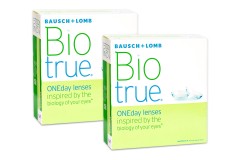
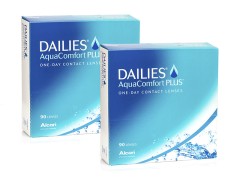
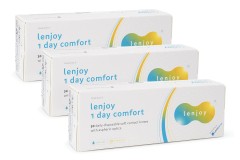
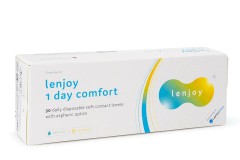
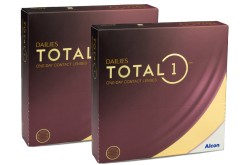
Alex
it resembles the reference of the following blog.
https://bit.ly/3JDvBSv
Thank you for your comment.
We are glad you like the article. The article works with generally available information, but we did not find any similarity in the attached link.
Have a lovely day.
Alex